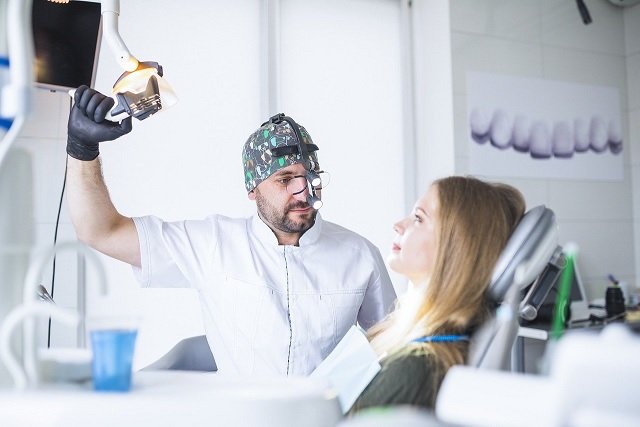Table of Contents
- Introduction to Continuous Education in Dentistry
- The Role of Training in Enhancing Patient Care
- Methods for Effective Training and Development
- New Trends in Dental Practices and Their Implications
- Utilizing Online Platforms for Dental Training
- Case Studies: Successful Integration of Continuous Education
- Overcoming Challenges in Dental Training Programs
- Building a Culture of Learning in Your Practice
Key Takeaways
- Discover the role of continuous education in the success of dental practices.
- Learn practical strategies to implement effective training programs.
- Understand the benefits of staying updated with the latest in dentistry.
Introduction to Continuous Education in Dentistry
Dentistry rapidly evolves in today’s fast-paced world, making continuous education more crucial than ever for dental professionals. By engaging in dental CE courses, dentists and their staff can remain at the forefront, guaranteeing they provide the utmost quality of care. Ongoing educational programs offer chances to discover the newest developments, improve skills, and embrace new practices, thereby boosting patient care and satisfaction.
Additionally, ongoing education is not solely focused on individual development; it also significantly contributes to the success and standing of a dental practice. Patients tend to place more trust and confidence in practices that meet industry standards and advancements. This trust translates to better patient retention and contributes to the overall growth of a practice.
The Role of Training in Enhancing Patient Care
Training forms the foundation of any thriving dental practice and dramatically affects the quality of care delivered. When team members undergo thorough training, they become skilled at managing intricate cases, enhancing diagnostic precision, and treatment success. Consequently, patients report greater satisfaction, an essential measure for any healthcare provider. A study highlights that healthcare centers prioritizing consistent training achieve better patient results and higher satisfaction scores.
The impact of quality training extends beyond technical skills. It also equips staff with better communication skills, essential for establishing trust and explaining treatment plans to patients. This comprehensive method of training guarantees that every element of patient engagement is enhanced, promoting a culture in which patient care is emphasized.
Methods for Effective Training and Development
Hands-on training is diverse, incorporating different techniques designed to address the varied requirements of a dental team. Workshops and interactive seminars provide practical experiences that can be directly utilized in the workplace, making them essential for skill development. These sessions frequently offer the chance to gain insights from industry professionals and participate in practical situations.
Alongside in-person training, online courses have become popular because of their convenience and diverse range of subjects. These courses enable professionals to study independently, fitting into hectic schedules while maintaining high standards. The top programs typically feature interactive components and evaluations to guarantee understanding and memory of the content, establishing them as a fundamental element in hands-on training and growth.
New Trends in Dental Practices and Their Implications
Remaining up-to-date with emerging trends in the dental sector is crucial for preserving a competitive advantage. With rapid advancements in digital technology, practices now have access to tools like 3D printing, digital scanners, and CAD/CAM systems. These technologies enhance precision and efficiency, revolutionizing traditional dental procedures. According to WebMD, broader trends in health technology, such as telemedicine and AI-driven diagnostics, are also reshaping patient care and experience across various fields, including dentistry. Practices that integrate these innovations will stay ahead and create a more seamless, patient-centered approach to care. To remain relevant, dental practitioners must understand these advancements in dental technology and their implications for patient care. Embracing new technologies improves operational efficiency and enhances patient experience by reducing procedure time and increasing comfort. Therefore, dental teams must receive training on effectively integrating these innovations into their practice workflows.
Utilizing Online Platforms for Dental Training
The emergence of online learning platforms has changed the field of dental education. These platforms provide access to a rich array of resources, such as webinars, video tutorials, and comprehensive online courses focusing on dentistry. The adaptable nature of online education enables professionals to remain updated without needing to travel or interrupt their daily work routines.
Moreover, many online platforms offer content created by world-renowned experts, ensuring that learners receive high-quality education. Interactive components, like quizzes and discussion boards, improve the learning experience by promoting participation and aiding in knowledge retention.
Case Studies: Successful Integration of Continuous Education
Examining successful real-world examples can provide valuable insights into the power of continuous education. One case is that of a mid-sized dental practice that adopted a systematic approach to training by offering monthly educational workshops. This initiative boosted team morale and resulted in a noticeable improvement in patient feedback. Another example involves a practice strategically investing in cutting-edge dental technology training. Implementing training programs facilitated the seamless integration of new tools, leading to quicker and more precise treatments. These case studies underscore the tangible benefits of committing to continuous education, which are further supported by recent findings. According to a study published in BMC Oral Health, educational interventions in dental settings can significantly enhance professional performance and improve patient satisfaction. In an ever-evolving field like dentistry, staying current with best practices is essential to maintaining high standards of care. Continuous learning also fosters a culture of growth and innovation within the team. Investing in education is about improving technical skills and building stronger, more responsive healthcare environments.
Overcoming Challenges in Dental Training Programs
Despite the apparent benefits, implementing comprehensive training programs presents challenges, including budget constraints and scheduling conflicts. Nevertheless, strategic planning and creative approaches can successfully manage these issues. For example, group training sessions and digital materials can lower expenses while upholding excellent educational quality.
Furthermore, practices can explore partnerships with educational providers for customized training, ensuring the content is relevant and applicable. By overcoming these challenges, practices enhance their team’s skills and drive long-term success and patient loyalty.
Building a Culture of Learning in Your Practice
Fostering a culture that values education is essential for any dental practice seeking long-term success. This begins with leadership demonstrating a commitment to learning and development. Encouraging team members to pursue educational opportunities and celebrating their achievements creates an environment where continuous improvement is the norm.
Furthermore, instituting regular training schedules and actively seeking feedback ensures that educational initiatives remain effective. With a strong culture of learning, practices can enhance their services, stay ahead of industry trends, and provide unparalleled patient care.






